
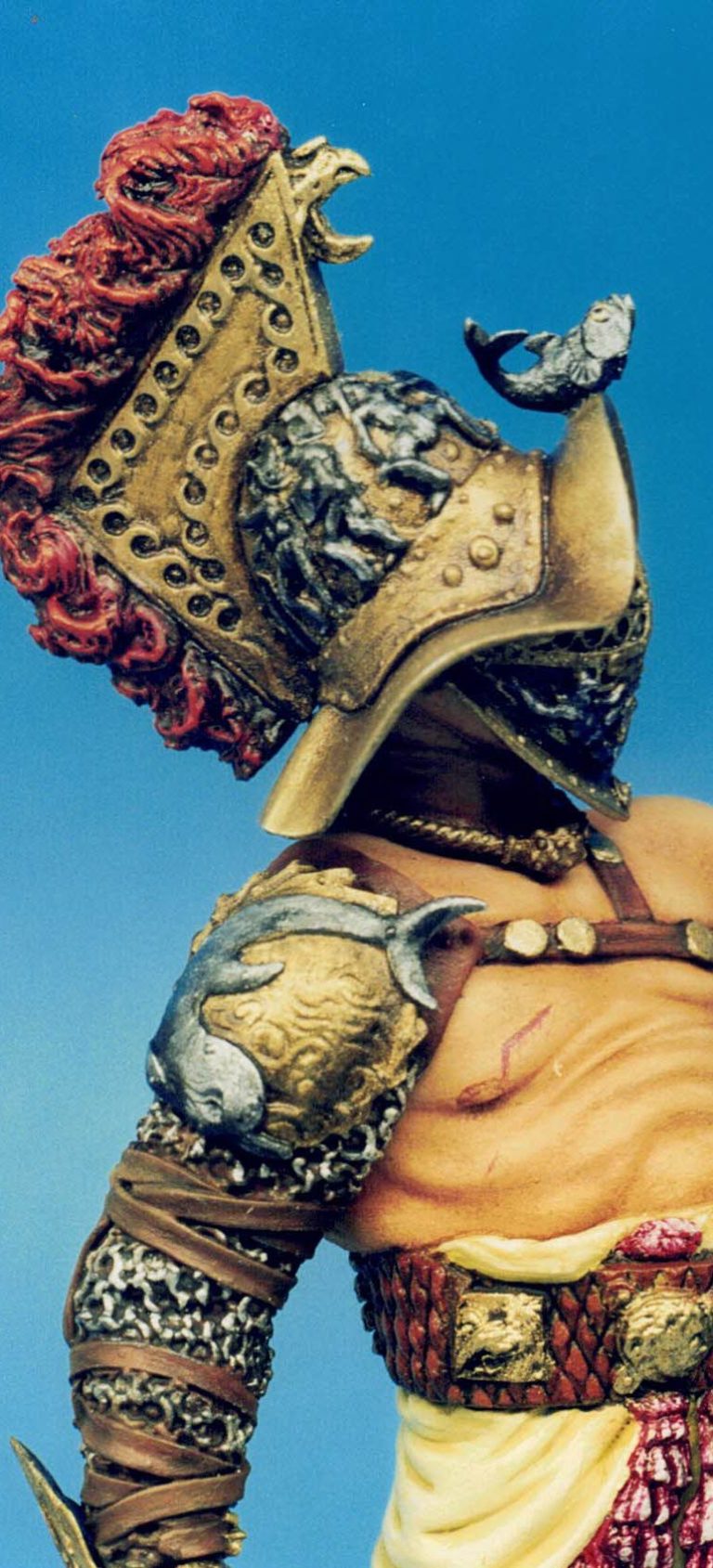
Vago the Gladiator
100mm White Metal kit from White Models of Italy
My first article appearing in Military Modelling magazine in 1998
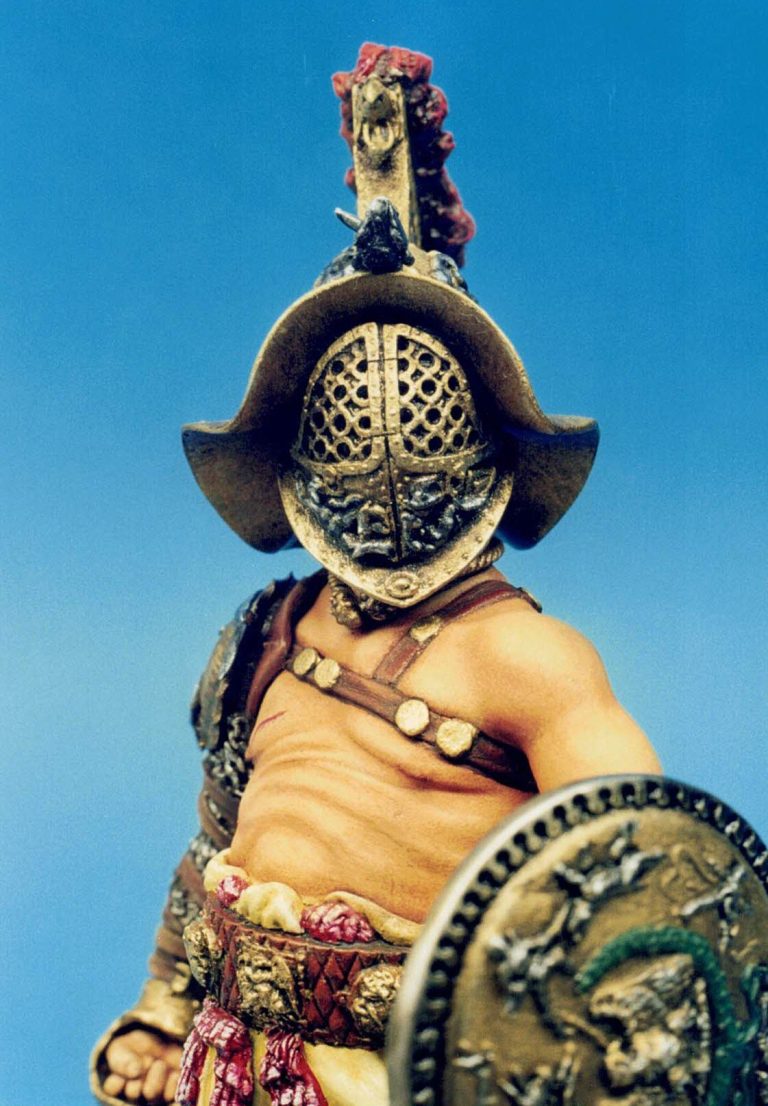
Yes, the first article Ken Jones used of mine, with many, many more to follow over the years that followed.
This model had been featured in a short review piece written by Ken in a Mil Mod in 1997, and I’d found that his reviews could be relied upon to be truthful about the quality or any foibles that a kit might have.
In truth, if Ken said it was good, then you could buy it with confidence, knowing that when you opened the box, you’d be happy with what your hard earned cash had bought.
As for this kit, a chubby looking gladiator, that went pretty much against the Hollywood idea of a muscle-bound,, toned and tanned, fighter that walked out onto the arena sand.
It piqued my interest, and with some searching out of references, there was a theory that perhaps Gladiators were a little bit cuddly, the reason being that cuts would bleed more, but the layers of fat would protect the vital organs, and training “prize warriors” might actually be costly, so having them die very regularly might not be what the Gladiator’s schools owners wanted to see.
Death matches are known to have taken place, but maybe these were less common, or restricted to “criminals” rather than the highly trained elite Gladiators…… Maybe ?
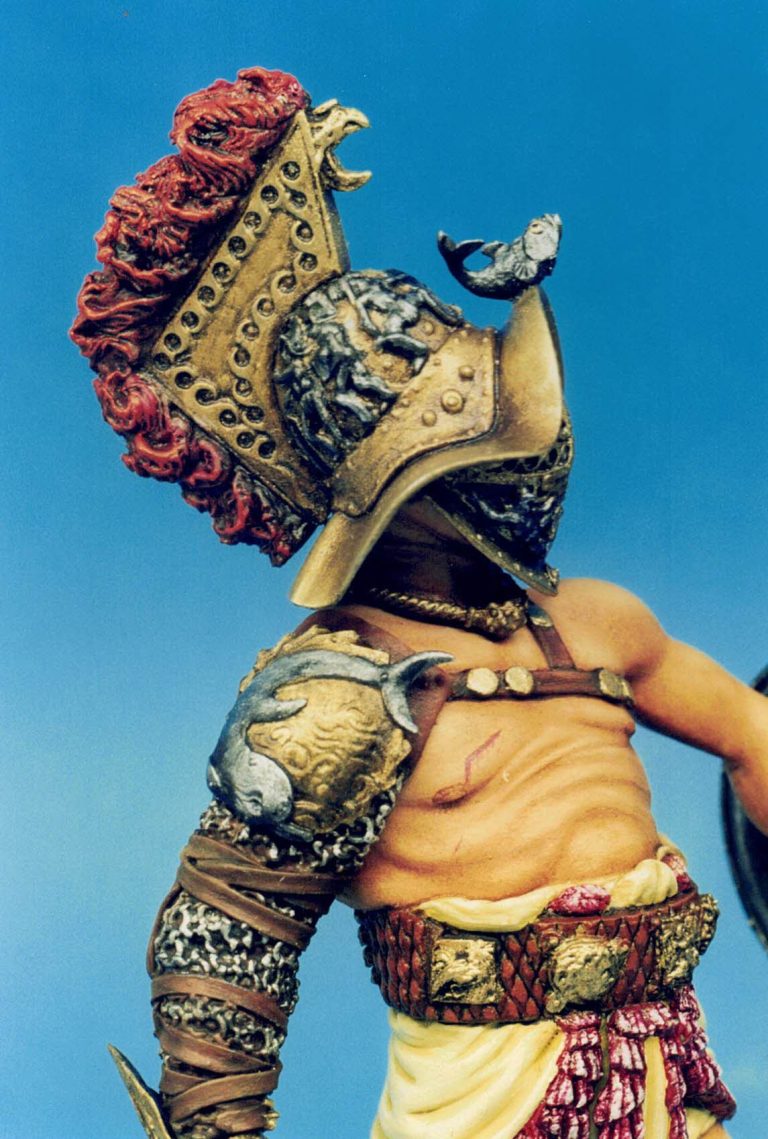
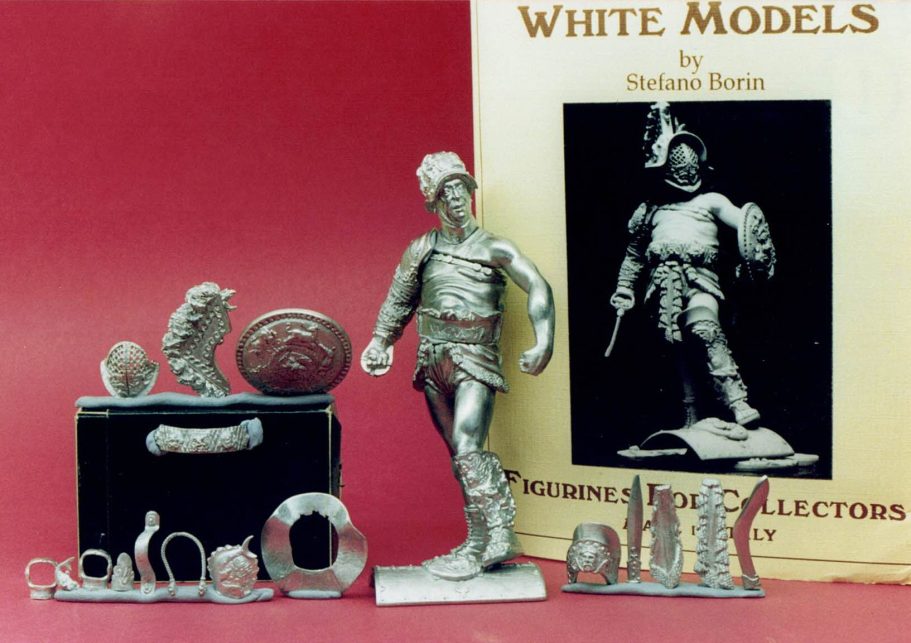
Photo #1 shows the box art and the parts laid out.
The box art is of an unpainted, assembled kit, and it contains layers of foam packing to protect the parts, with a slip-case style cover with the box art on it.
Parts were cleanly cast with minimal evidence of mould part lines, and the metal is relatively soft and the few lines found were easy to clean off with a fine file and a sharp scalpel.

Photos #2, #3 and #4 show the face and helmet painted.
The face is my usual mix of Mars Brown and Titanium White oils over an acrylic undercoat, and the helmet has been painted with a dark brown acrylic, followed by Games Workshop Shining Gold, and finally a coat of Burnt Umber oils that is gently wiped and dabbed off with a soft cloth to remove the brown oil paint and reveal the gold acrylic beneath.
The face is a little bit bland, but then again, in most cases, the model will be displayed with the faceplate fastened in place, which will completely hide the features anyway.


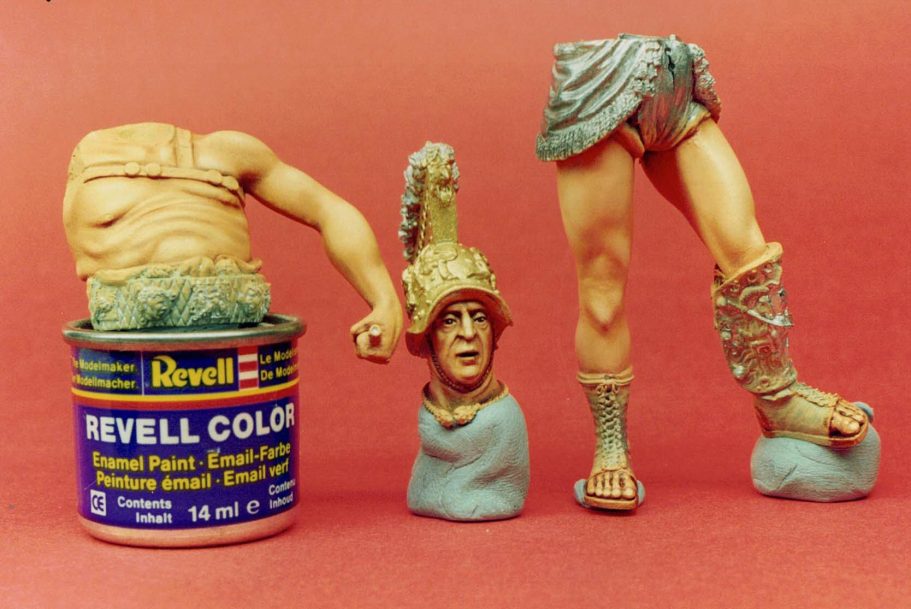
Photo #5 shows the flesh areas painted, at this stage with no weathering of any cuts or wounds.
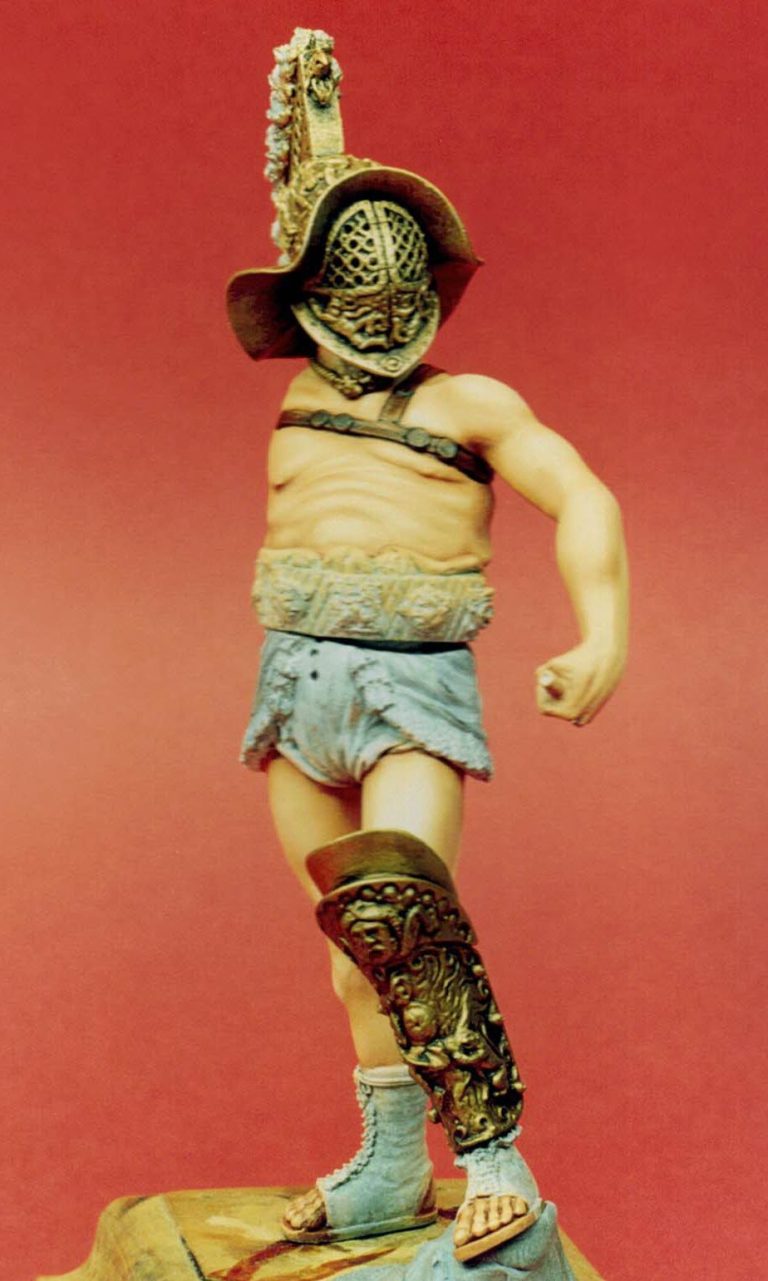
Photo #6 and the parts have been fastened together, the gap at the waist is quite wide, and whilst I did pin the upper and lower halves of the body together, I added a large blob of Milliput inside the joint that was squeezed out as the two parts were pressed together.
The excess putty was scraped away and made to look like folds in the cloth.
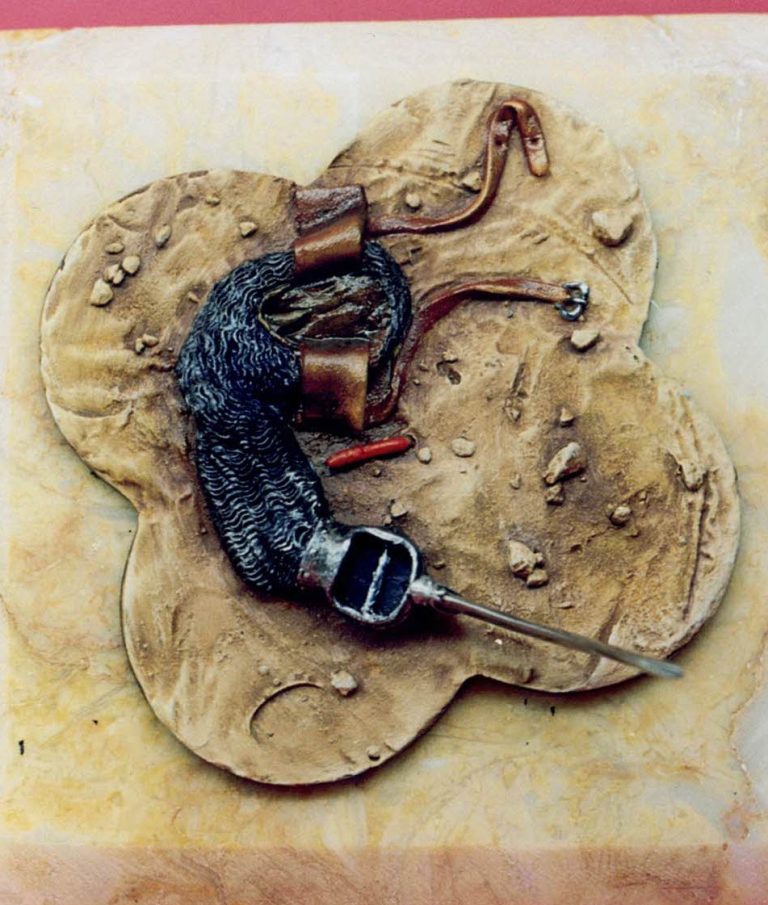
Photos #7 and #8 - whilst the putty was curing, I began painting the base.
This is really nicely detailed with the discarded mail sleeve and sword, and a finely textured sand with footprints and small rocks in it.
I attached the groundwork to a marble plinth, but be warned, marble does not allow superglue to adhere to it. To avoid the model detaching from the plinth, I added a blob of Milliput underneath the groundwork, attaching a bolt into the putty whilst it was still soft, and then fastening a nut to the other end of the bolt through a hole in the plinth.
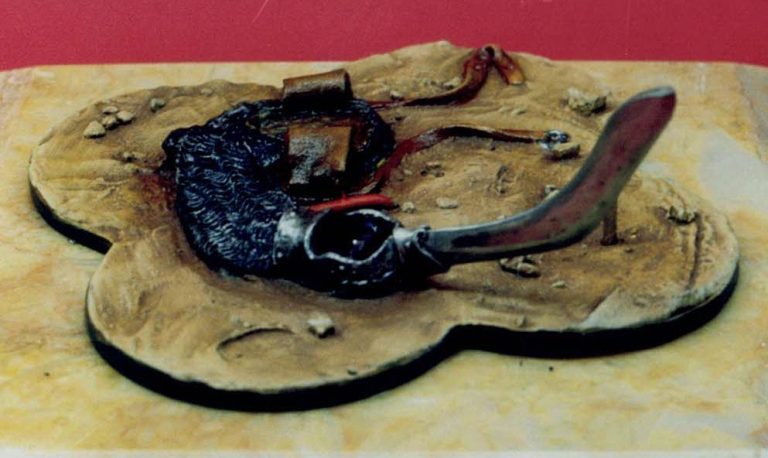

The rest of the shots show the finished model attached to the base. The left foot is a bit of a tenuous joint to the shield, and fortunately I’ve used a wire pin through the right foot to fasten him to the base. It doesn’t stop the left foot from becoming detached from the shield, but it does stop the figure from toppling of the base.
Of note is the very fine detailing of the tasselled fringe around the lower edges of his loincloth, and the very nice texture sculpted into the ring mail and designs on the armour.
In fact there’s a lot of lovely sculpted detail for the painter to lavish attention on with this figure, and I’m glad that I purchased it and got paint on it.
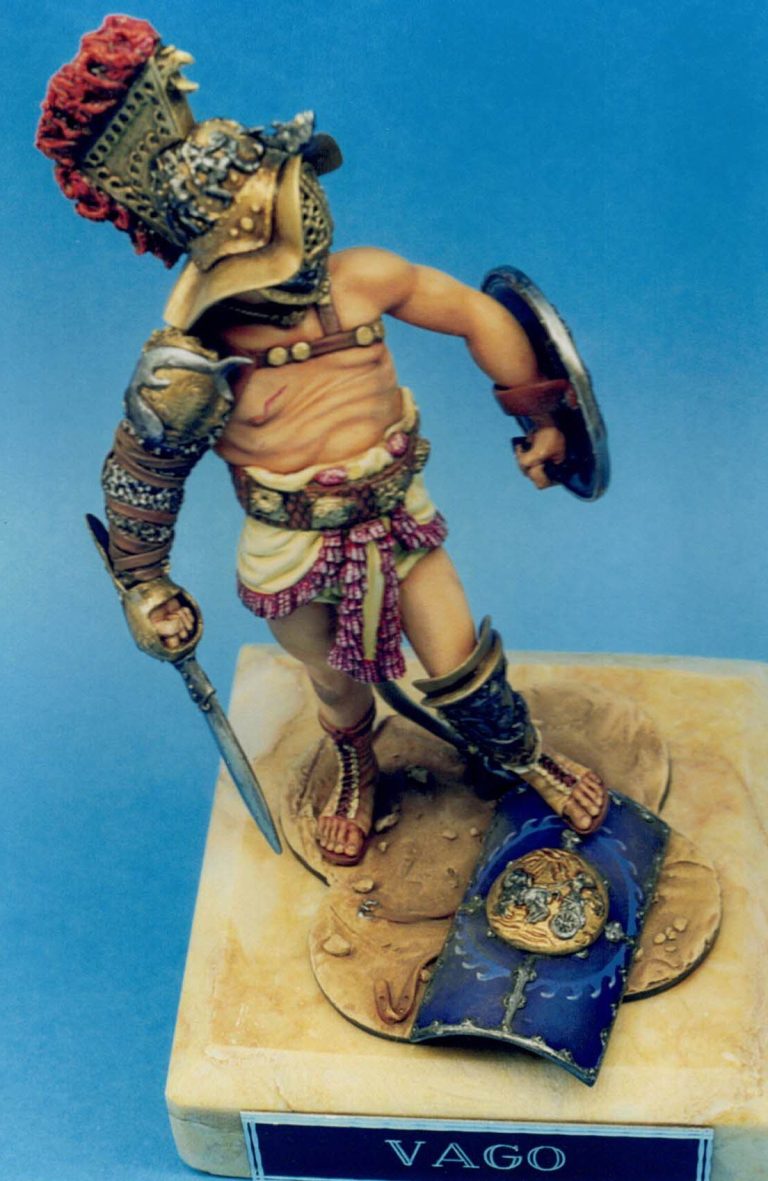
Truth be told, after reviewing pictures and trying to find articles for inclusion on this website ( I had to rewrite this, because I can’t even find the magazine, let alone the original text file on disc ), I’ve been looking online to find a new kit of this figure, if anyone was selling a second hand one by chance.
I’d like to have a go at painting him again and see how the two compared and how my painting has changed over the intervening decades.
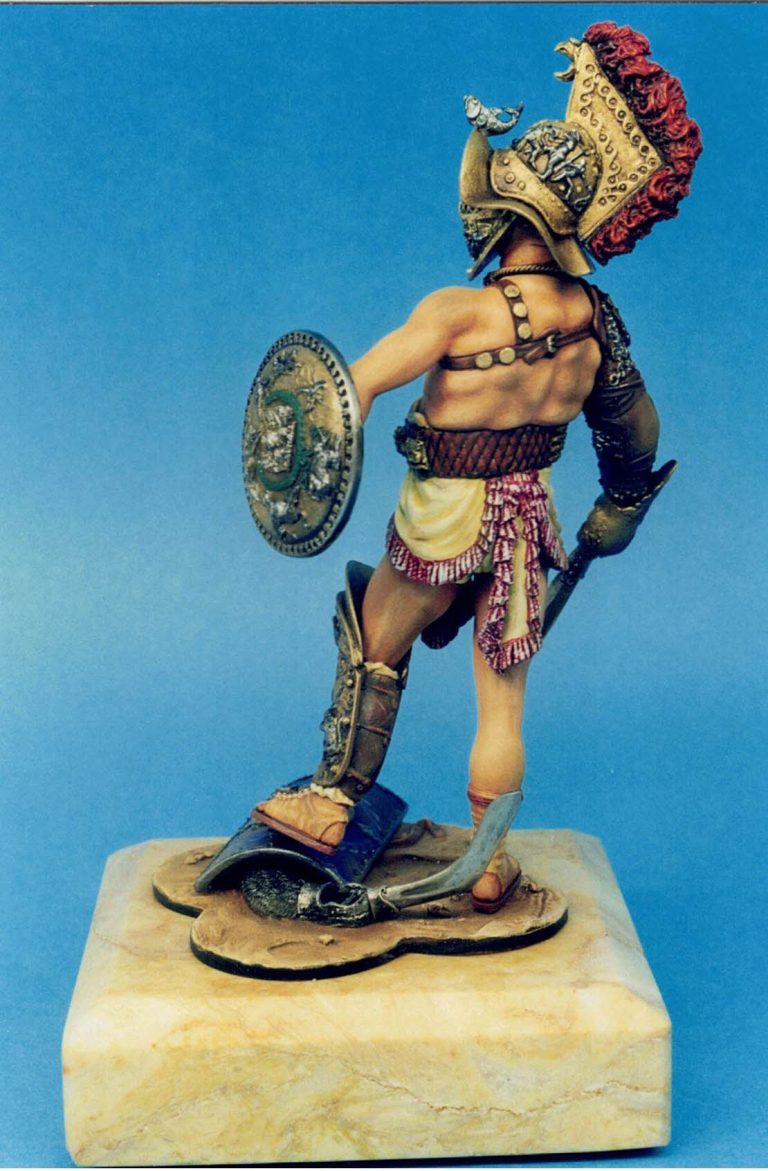
Final words.
Whilst nearly thirty years old, this is still a good-looking kit. My painting ( hopefully ) has improved, so perhaps the paintjob is showing it’s age, but the sculpting and casting stand up well to today’s standards, and all that fine detail really does pay the painter back in spades.
I’ve bought and painted a few of Stefano Borin’s White Models kits, and whilst very nice pieces in and of themselves, this little Gladiator is still my favourite one, closely followed by the Half Armoured Samurai.
Recommended, if you can find one available, but just remember, I get first dibs !
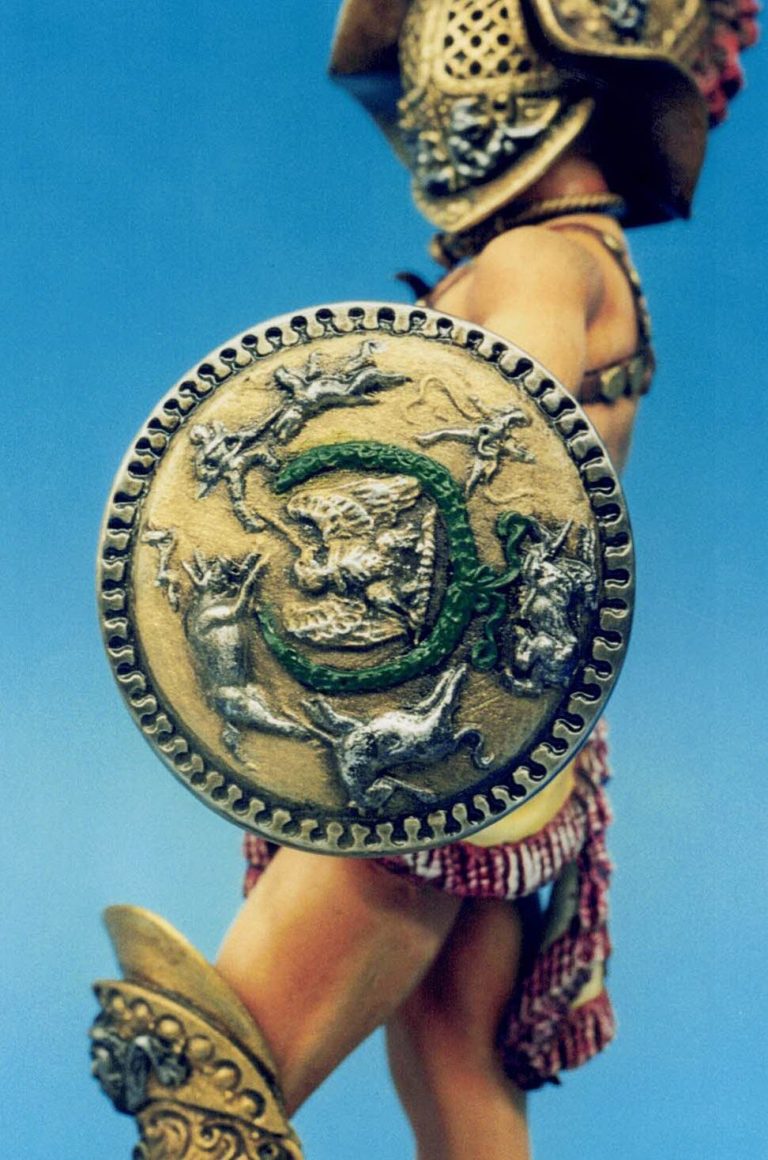
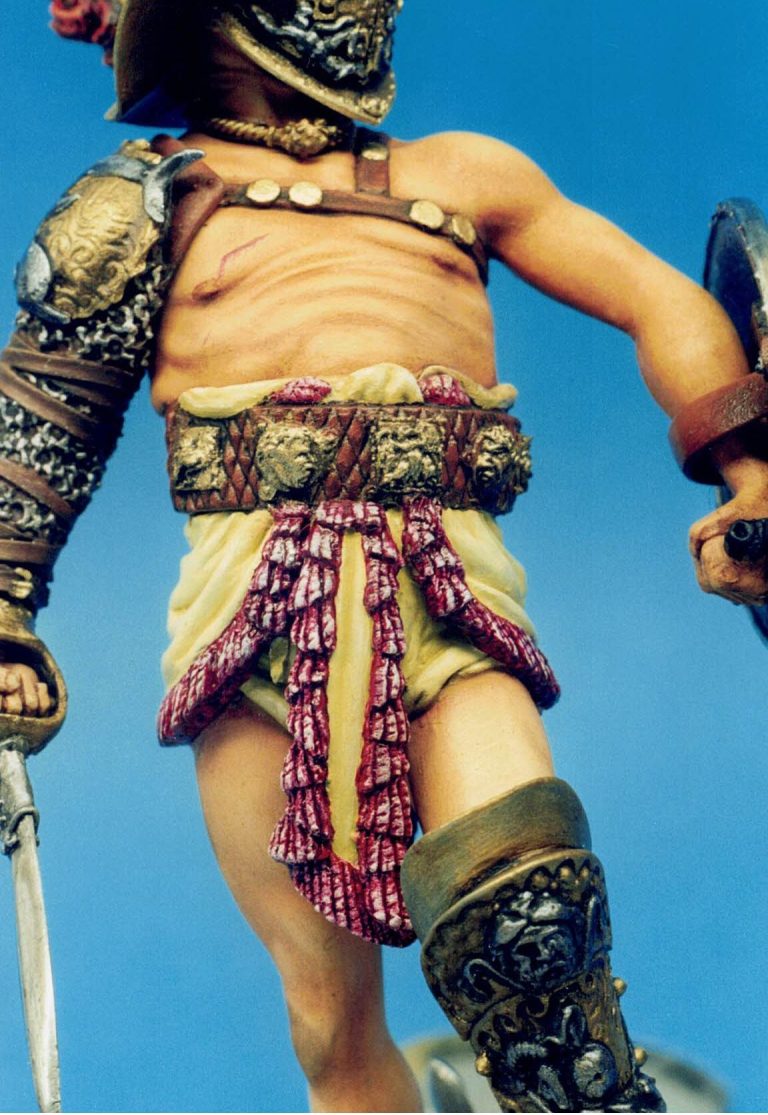
We need your consent to load the translations
We use a third-party service to translate the website content that may collect data about your activity. Please review the details in the privacy policy and accept the service to view the translations.